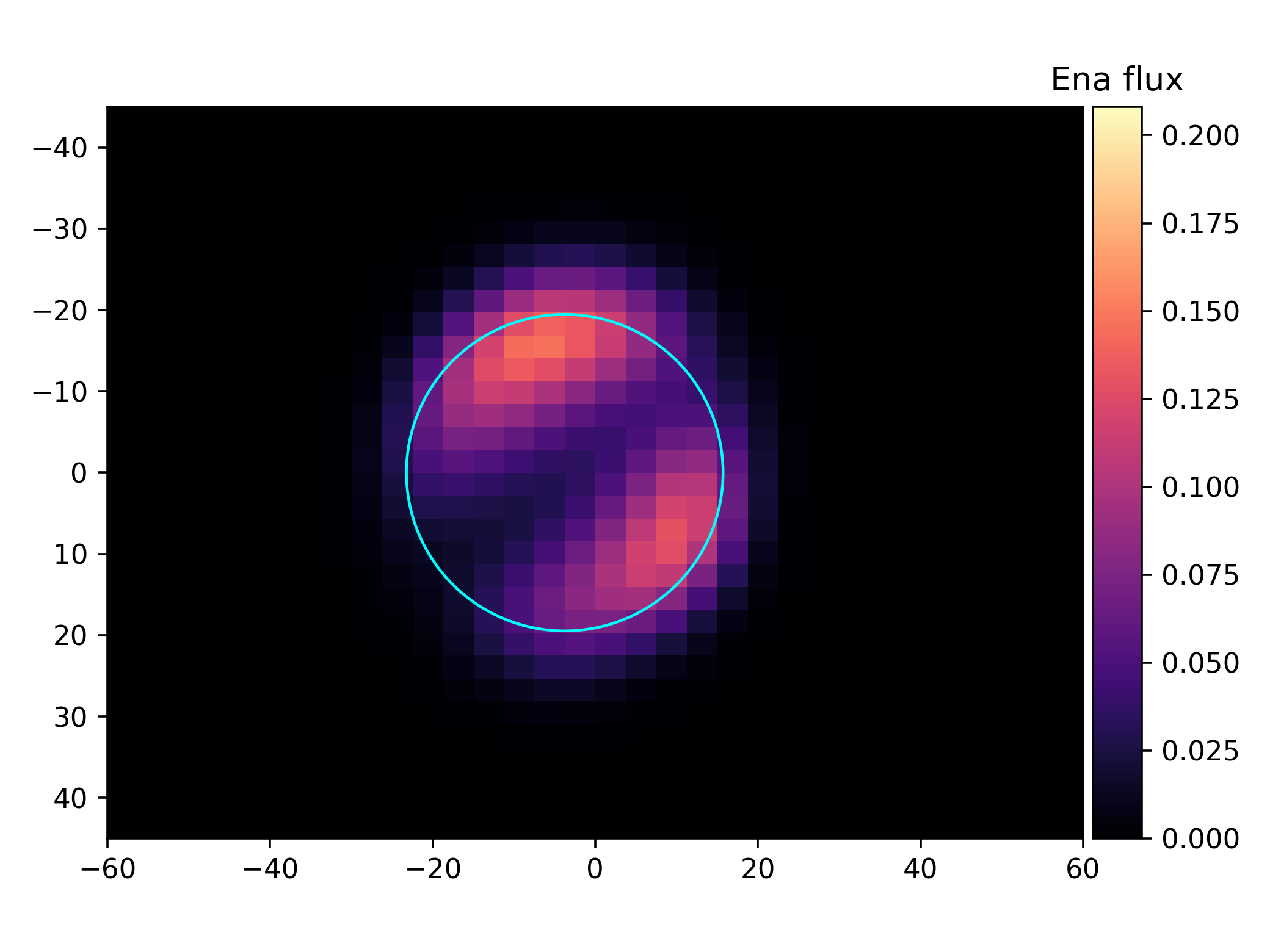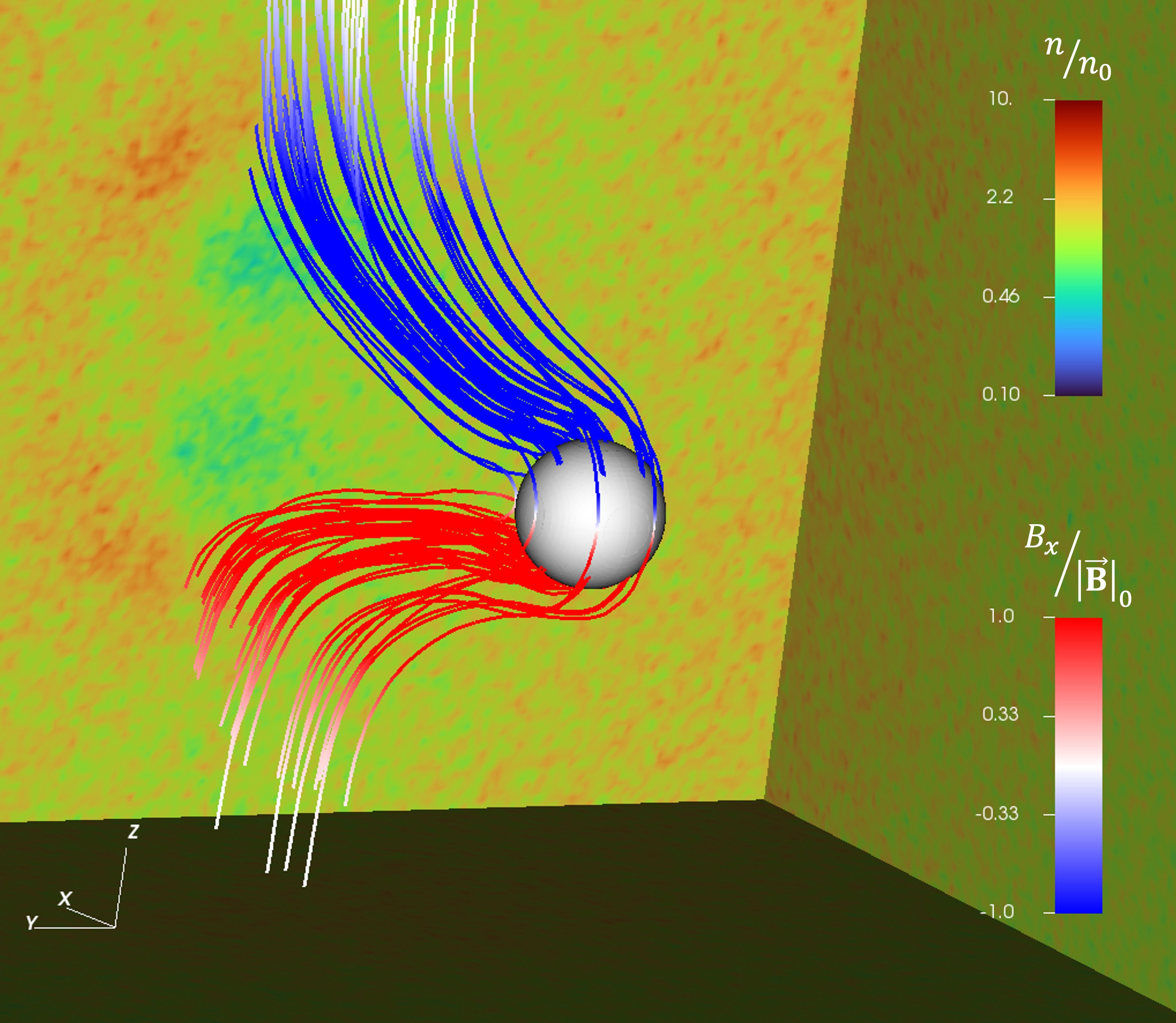About me
Hello there!
Welcome to my personal webpage. I am a doctoral candidate in the School of Earth and Atmospheric Sciences at the Georgia Institute of Technology in Atlanta, Georgia.
Active Research Interests
Energetic Neutral Atom (ENA) Emissions
My work focuses on developing a method to remotely observe the complex, three-dimensional interactions between magnetized plasmas and obstacles (such as moons or planets) through a more efficient and higher dimensional means. Currently, this is typically done by measuring magnetic fields and energetic particle counts along a close flyby of the moon. This method is indeed limited, since multiple flybys with the same upstream conditions are required to determine conclusively the 3-dimensional nature of the interaction. However, Energetic Neutral Atoms (ENAs) are a powerful tool for such remote sensing, since the morphology of ENA emissions is governed by the ambient neutral gas distribution, the ambient energetic ion distribution, and the local magnetic field configuration. As such, the emission of these ENAs may be imaged, corresponding to a 2-dimensional ‘picture’ of the interaction, in a sense. Reconstructing the physical nature of the obstacle-plasma interaction through theoretical considerations and numerical modeling is the goal and scope of my work.

Europa
The interaction between Europa and the plasma embedded within the Jovian magnetosphere stimulates a complex physical system that is not yet entirely understood. The magnetic signatures obtained during Galileo flybys revealed an induction signature from a salty subsurface ocean that is one of the most likely candidates to host extraterrestrial life within the solar system. My work utilizes an established hybrid plasma model (AIKEF) to simulate the magnetized Jovian plasma in the neighborhood of Europa and the resultant perturbations to the electromagnetic fields that develop from the interplay between this plasma and the neutral envelope & induced field of the Galilean moon. These simulations can offer context to magnetic field observations and plasma spectrometer readings from spacecraft flybys.
In the early 2030s, ESA’s JUpiter ICy moons Explorer (JUICE) mission will arrive at the Jovian system and take the first ENA images of the Galilean moons’ interactions. In anticipation of this, I am developing the first model to self-consistently treat the plasma interaction with and subsequent ENA emissions from the atmosphere of Europa. Using a hybrid model to determine the field configurations and a particle tracing tool to evolve the propogating energetic ion trajectories, I am able to constrain the influence of key parameters on the ENA emission morphology, informing the upcoming JUICE campaign.

Callisto
Callisto possesses the second-most dense oxygen rich atmosphere in the solar system. Given this, and its putative subsurface ocean, the Galilean moon has been a recent interest of plasma physics. My work aims to characterize its highly variable interaction with the Jovian magnetosphere. Callisto orbits at over 26 Jupiter radii from Jupiter, causing the magnetic field orientation and plasma conditions at Callisto to vary much more strongly than they do at the other Galilean moons. I have developed a model to apply a combination of particle tracing and hybrid plasma simulations to constrain the variability in ENA emissions at Callisto across its orbit. This work, in preparation for ESA’s JUICE mission, will inform ideal spacecraft trajectories for ENA imaging of Callisto’s rich interaction, as well as provide context and interperetation for the ENA observations to be taken.
Pluto
After the New Horizons flyby of the dwarf planet in 2015, research studying the heliospheric environment of Pluto was reinvigorated. I have worked to implement the hybrid model at the Pluto system in a project during my first year of graduate school in a Physics of Planets course. The orbital distance, and thus the heliospheric environment of Pluto is highly variable, ranging from 30 AU at perihelion to nearly 50 AU at aphelion. Since New Horizons only was able to perform a single flyby of the Plutonian system, I am interested in using the knowledge from the flyby to study the environment of Pluto throughout its 248 year orbit. Also, colleagues of mine are interested in constraining the three-dimensional nature of the plasma interaction during the New Horizons flyby using a joint model of the electromagnetic fields and energetic ion fluxes.

About This Site
I have been doing research in this field since May of 2022. Since then, I have had the opportunity to present some of my work at various conferences and in the peer-reviewed literature. The menu bar across the top of this page will display these lists for you: namely, talks, publications, and a link where you can access my CV.
The small menu below my picture points you to many different accounts of mine, where you may contact me or learn a bit more about what I do. If you would like to get in contact, my email is linked there as well. Thanks for visiting!
